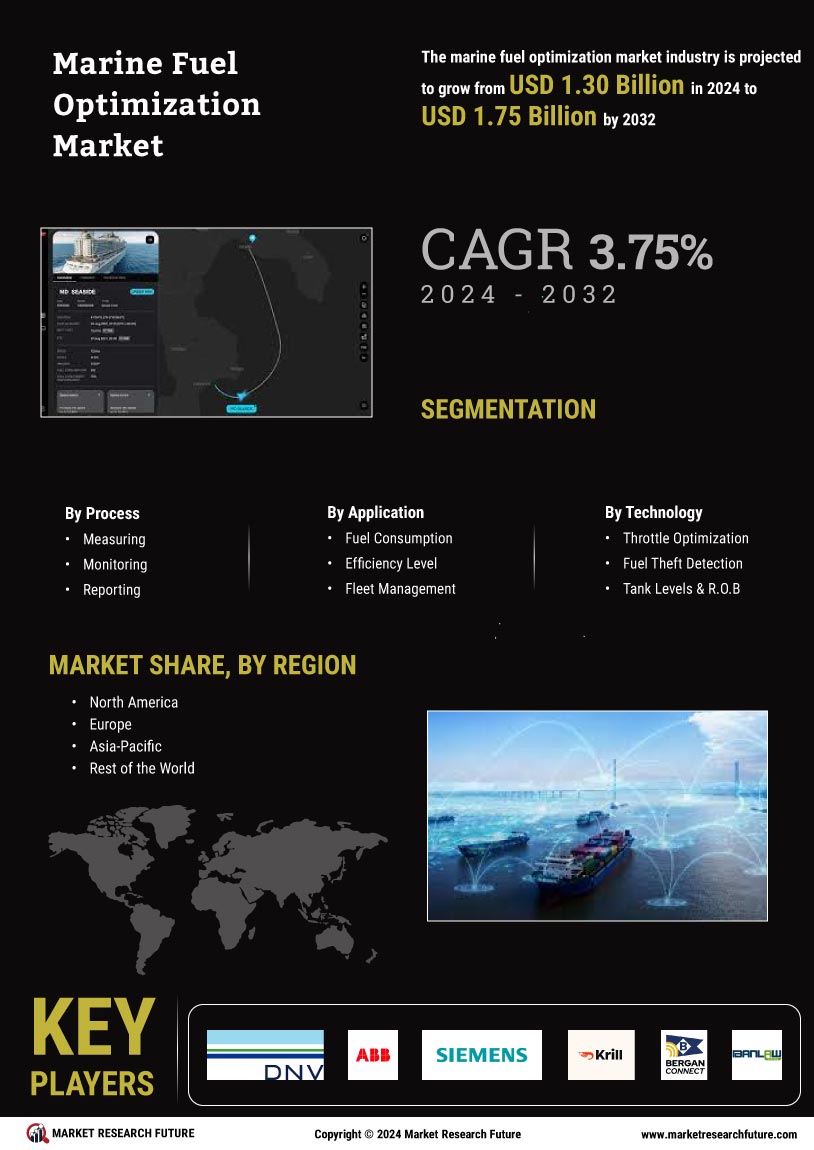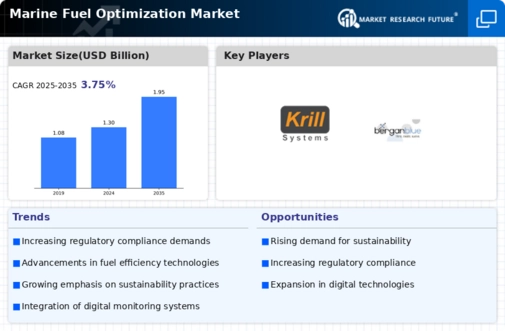Marine Fuel Optimization Market Summary
As per Market Research Future Analysis, the Global Marine Fuel Optimization Market was valued at USD 1.30 Billion in 2024 and is projected to grow to USD 1.95 Billion by 2035, with a CAGR of 3.75% from 2025 to 2035. The market is driven by rising fuel prices, stringent environmental regulations, and advancements in fuel optimization technologies. The monitoring segment leads the market, while fleet management applications generate the most revenue. North America dominates the market, followed by Europe and Asia-Pacific, with significant growth expected in the latter region due to increased shipbuilding activities.
Key Market Trends & Highlights
Key trends driving the marine fuel optimization market include rising fuel prices and stringent environmental regulations.
- Market Size in 2024: USD 1.30 Billion
- Projected Market Size by 2035: USD 1.95 Billion
- CAGR from 2025 to 2035: 3.75%
- North America holds the largest market share due to strict pollution regulations.
Market Size & Forecast
| 2024 Market Size | USD 1.30 Billion |
| 2035 Market Size | USD 1.95 Billion |
| CAGR (2025-2035) | 3.75% |
Major Players
Key players include DNV-GL AS (Norway), ABB Ltd. (Switzerland), Siemens AG (Germany), Eniram Oy (Finland), and The Emerson Electric Company (U.S).














Leave a Comment